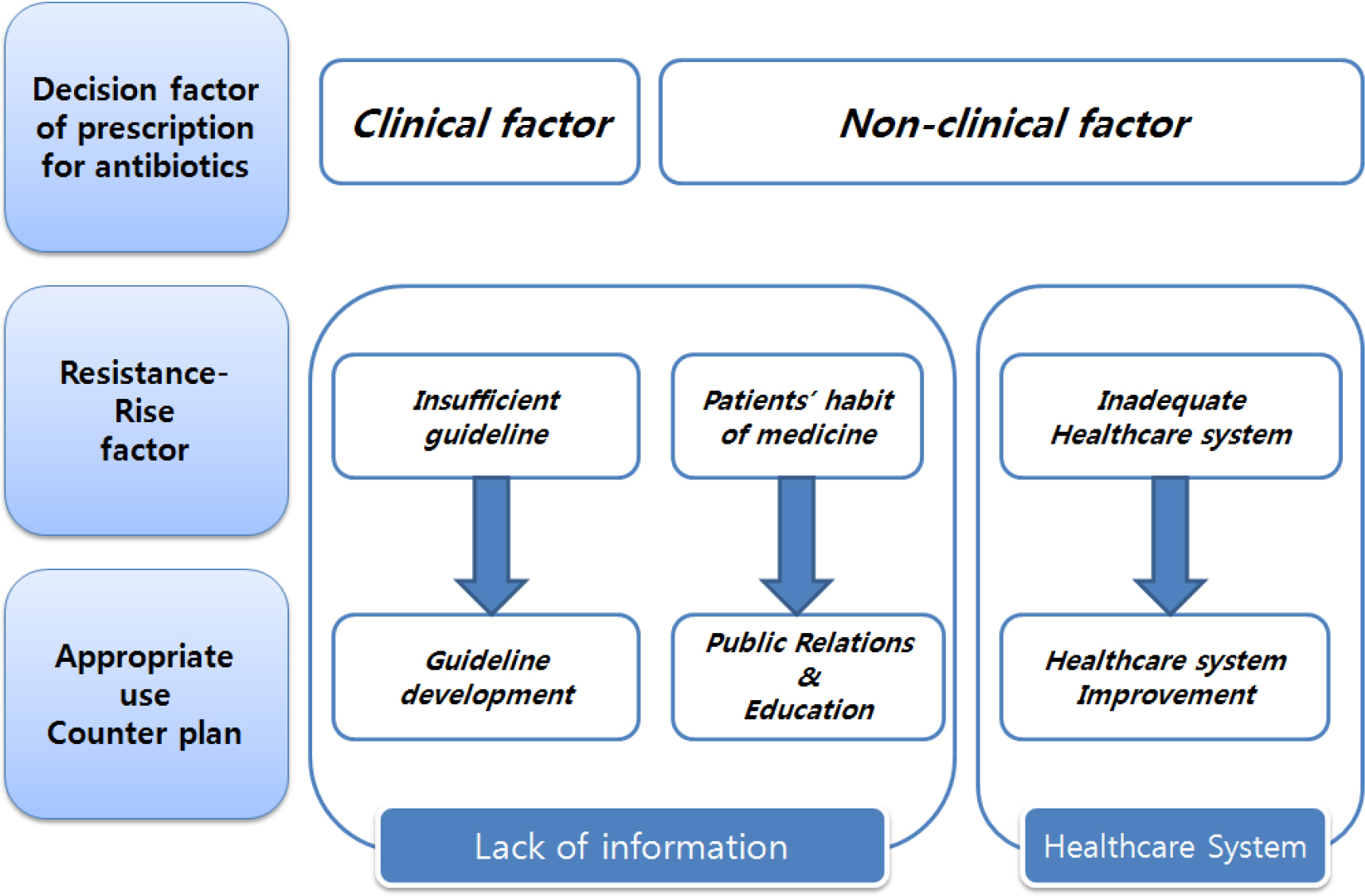References
1. World Health Organization. Antimicrobial Resistance Global Report on Surveillance 2014 Geneva: World Health Organization; 2014.
2. McCaig LF, Besses RE, Hughes JM. Antimicrobial drug prescription in ambulatory care settings, United States, 1992–2000. Emerg Infect Dis 2003;9(4):432–7.
3. McCaig LF, Hughes JM. Trends in antimicrobial drug prescribing among office-based physicians in the United States. JAMA 1995;273(3):214–9.
5. Song JH, Joo EJ. The crisis of antimicrobial resistance: current st atus and future strategies. Korean Med Assoc 2010;53(11):999–1005.
6. Bronzwaer SL, Cars O, Buchholz U, Mölstad S, Goettsch W, Veldhuijzen IK, et al. A European study on the relationship between antimicrobial use and antimicrobial resistance. Emerg Infect Dis 2002;8(3):278–82.
7. Goossens H, Ferech M, Vander Stichele R, Elseviers M. ESAC Project Group. Outpatient antibiotic use in Europe and association with resistance: a cross-national database study. Lancet. 2005;365(9459):579–87.
8. Ministry of Health and Welfare. National Antibiotics Resistance Management Counterplan 2016∼2020 [Internet] Sejong: Ministry of Health and Welfare; 2016. [Accessed August 11, 2016]. Available from:
http://www.motie.go.kr/common/download. do?fid=bbs&bbs_cd_n=81&bbs_seq_n=158481&file_seq_n=1.
9. Kim DS, Bae G, Lee HS, Kim HY, Kim SK, Um JS, et al. The study on evaluation of antibiotics use in outpatients with respiratory diseases Wonju: Health Insurance Review & Assessment Service; 2010.
10. Tan T, Little P, Strokes T. Guideline Development Group. Antibiotic prescribing for self limiting respiratory tract infection in primary care: summary of NICE guidance. BMJ 2008;337:a437.
11. Kuyvenhoven MM, van Balen FA, Verheij TJ. Outpatient antibiotic prescriptions from 1992 to 2001 in the Netherlands. J Antimicrob Chemother 2003;52(4):675–8.
12. Seo OK. Inappropriate use of antimnicrobial agents in Korea and practical guidelines for its improvement. J Korean Soc Chemother 1997;15(2):201–3.
13. Cars O, Mölstad S, Melander A. Variation in antibiotic use in the European Union. Lancet. 2001;357(9271):1851–3.
14. Brookes-Howell L, Hood K, Cooper L, Little P, Verheij T, Coenen S, et al. Understanding variation in primary medical care: a nine-country qualitative study of clinicians' accounts of the nonclinical factors that shape antibiotic prescribing decisions for lower respiratory tract infection. BMJ Open 2012;2(4)). pii: e000796.
15. Barden LS, Dowell SF, Schwartz B, Lackey C. Current attitudes regarding use of antimicrobial agents: results from physician's and paren's focus groups discussions. Clin Pediatr (Phila) 1998;37(11):665–71.
16. Trepka MJ, Belongia EA, Chyou PH, Davis JP, Schwartz B. The effect of a community intervention trial on parental knowledge and awareness of antibiotic resistance and appropriate antibiotic use in children. Pediatrics 2001;107(1)): E6.
17. Mangione-Smith. R, McGlynn EA, Elliott MN, McDonald L, Franz CE, Kravitz RL. Parental expectations for antibiotic, physician-parent communication, and satisfaction. Arch Pediatr Adolesc Med 2001;155(7):800–6.
18. Kim NS, Kim DS, Jeoung HJ, Kim CK, Kim MJ, Um JS, et al. Analysis and evaluation of antibiotics use Wonju: Health Insurance Review & Assessment Service; 2006.
19. Kang MA, Son JY, Kim HJ. An exploratory application of the mixed methods research: application of surveys and focus group interviews for regional public health issue decision making. J Korean Public Admin 2007;41(4):415–37.
20. Morgan DL. Successful Focus Groups: Advancing the State of the Art 1st ed.th ed. Thousand Oaks (CA): SAGE Publications, Inc.; 1993.
21. Krueger RA, Casey MA. Focus Groups: A Practical Guide for Applied Research 4th ed.th ed. Thousand Oaks (CA): SAGE Publications, Inc.; 2009.
22. Lewis M. Focus group interviews in qualitative research: are-view of the literature [Internet] NSW: The University of Sydney; 2000. [Accessed September 26, 2016]. Available from:
http://www.aral.com.au/arow/rlewis.html.
23. Coenen S, Van Royen P, Michiels B, Denekens J. Optimizing antibiotic prescribing for acute cough in general practice: a cluster-randomized controlled trial. J Antimicrob Chemother 2004;54:661–72.
24. Jang SN, Kim NS. Understanding the culture of antibiotics prescribing of primary physicians for acute upper respiratory infection. J Korean Acad Fam Med 2004;25(12):901–7.

